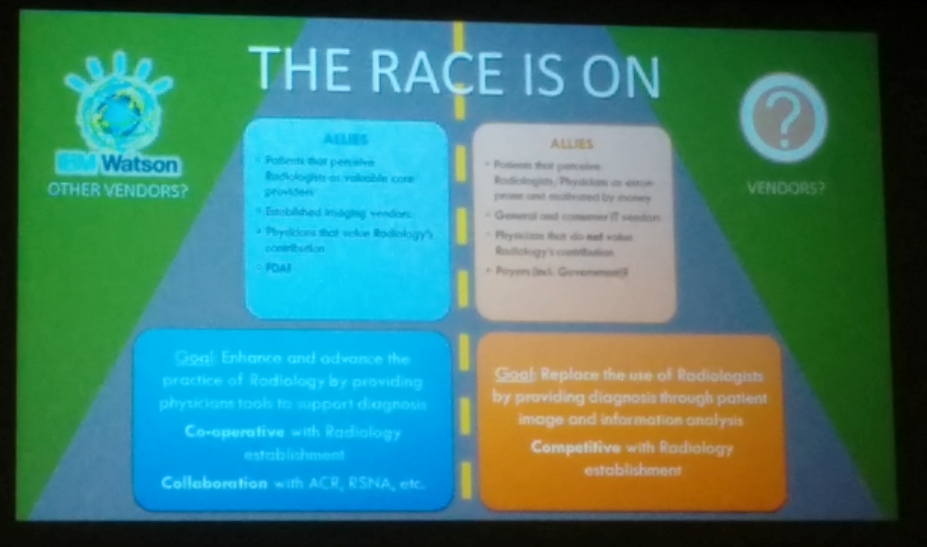Given the role of counterpoint to Keith Dreyer’s machine learning keynote at the Intersociety summer conference, Don Dennison argues that all the attention paid to machine learning thus far is partly related to hype. “There will be a trough,” says Dennison, and what follows the trough will be mature technology development.
Dennison is referring to the Gartner hype cycle, which looks like this:
Dennison then goes on to describe a more realistic view of machine learning, what it might look like at the end of the curve, and why now might be the time for machine learning:
- The best graduates from top computer science programs want to spend their careers developing machine learning. These bright guys and gals will have a long successful career developing tools.
- There is a great opportunity in health care. Healthcare rests at the bullseye in the crossroad between the need for cost containment and exciting algorithmic challenges.
Where do we go next? “We keep talking about structured reporting. But the rest of the world isn’t trying to get to structured reporting,” Dennison says.
Indeed, the rest of the world already have that – they have more. They have pictures, videos, and 3D visualizations.
Don Dennison describes visualization, multimedia document, and HL7/DICOMweb as the immediate next major steps to improving radiology quality. Accountability is also an important issue: what if the computer makes a misdiagnosis? Who takes the responsibility?
There will be many failures before success, but the tipping point for massive development is imminent.
“The race is on,” concludes Dennison.





